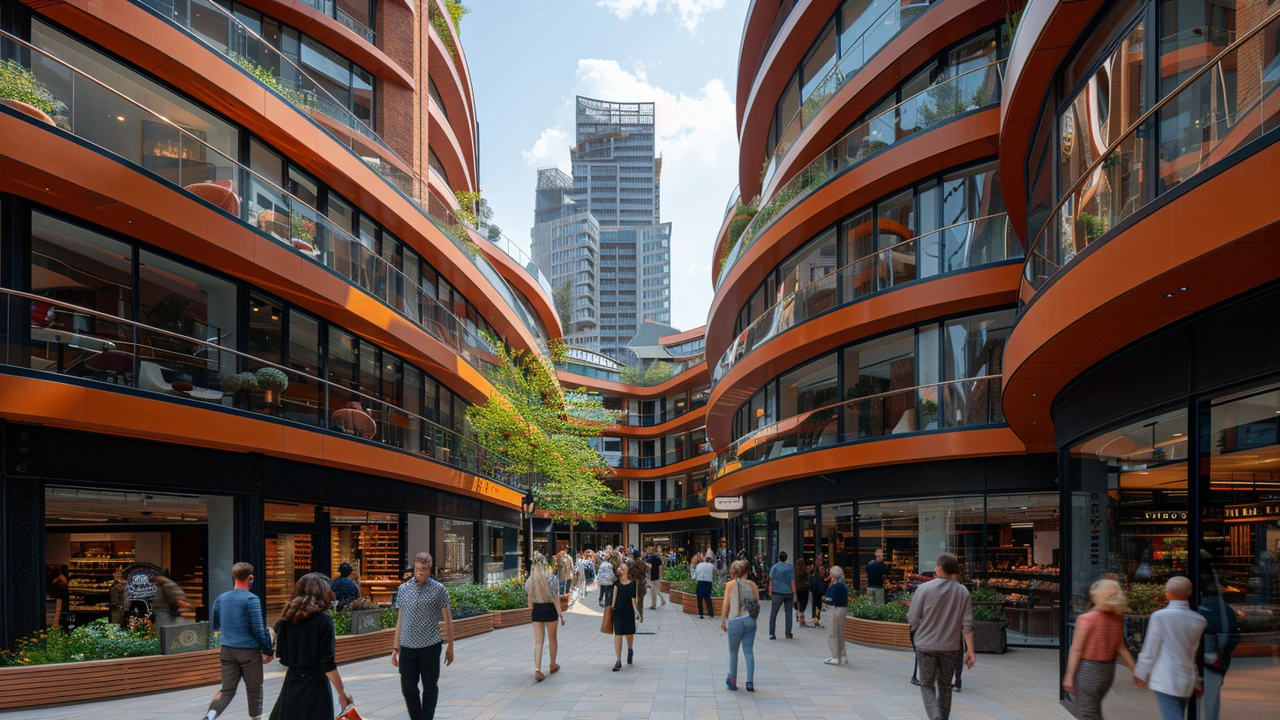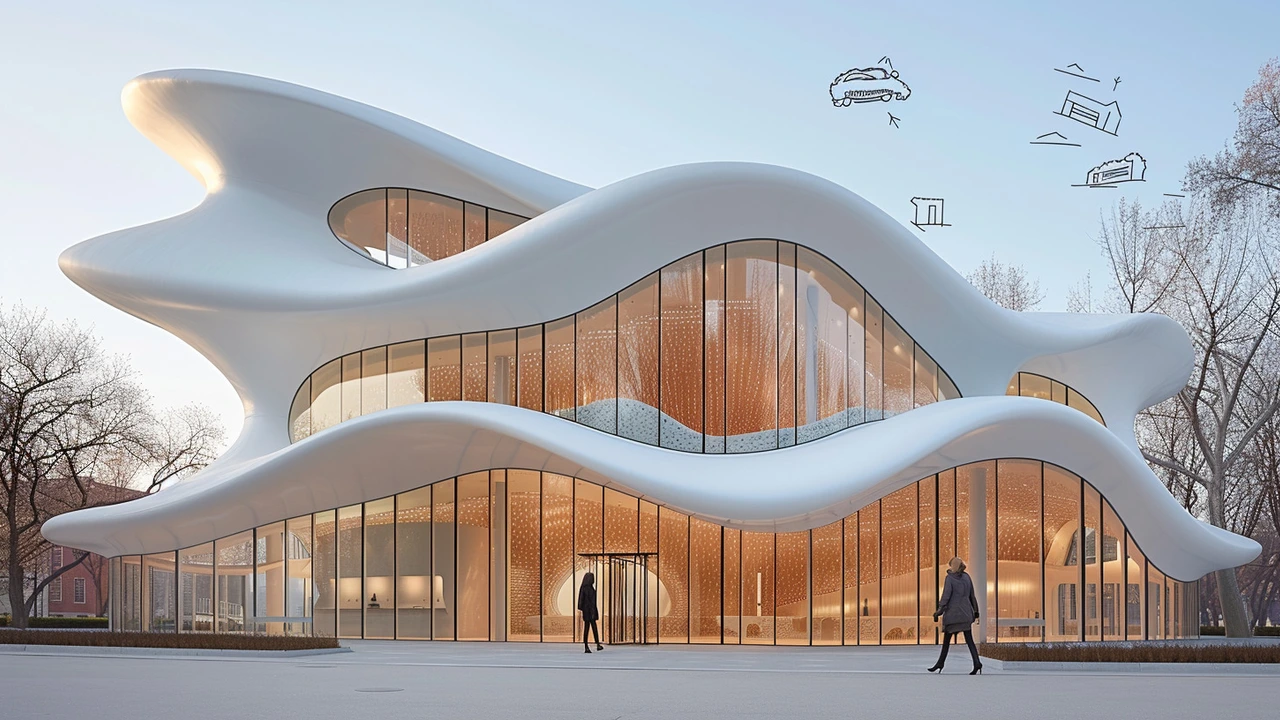Expressionist Architecture: Bold Forms and Raw Emotion
Expressionist architecture grabs attention because it puts feeling before strict rules. Instead of neat boxes, you get movement, drama, and shapes that look almost handcrafted. If a building makes you feel something strong—mystery, awe, even unease—chances are it borrows from expressionist ideas.
The style began in the early 20th century, mostly in Germany and the Netherlands. Architects like Bruno Taut, Erich Mendelsohn, and Hans Poelzig rejected classical order and industrial blandness. They wanted buildings that read like sculptures. That push led to experiments with brick, concrete, glass, and unusual rooflines that still stand out today.
Key features are easy to spot once you know them. Expressionist buildings favor dynamic silhouettes—curves, spikes, and slanted planes. Surfaces often show texture: patterned brickwork, rough-cast concrete, or flowing plaster. Windows can be irregular or grouped to create rhythm instead of symmetry. Interiors aim for emotion too: dramatic staircases, vaulted ceilings, and unexpected light effects.
How to Spot Expressionist Buildings
Look for a few clear signs:
- Silhouettes that feel sculptural—curves, jagged peaks, or a prow-like edge.
- Brick or concrete used in bold patterns, not just smooth cladding.
- Windows and openings placed for effect, not strict balance.
- Ornament that’s abstract or geometric rather than classical motifs.
- Interiors with theatrical lighting, sweeping stairs, or cavernous volumes.
Famous examples help make these traits real. Erich Mendelsohn’s Einstein Tower uses flowing stucco to mimic organic form. The Chilehaus in Hamburg is a sharp, brick-prowed commercial block from the brick-expressionist strand. Hans Poelzig’s Grosses Schauspielhaus once stunned visitors with a cave-like interior and dramatic lighting. In Amsterdam, the Scheepvaarthuis shows how expressionist energy mixes with the Amsterdam School’s ornate brickwork.
Using Expressionist Ideas Today
You don’t need to rebuild a monument to use expressionist ideas. Start small: add a curved wall, a sculptural stair, or textured brick as an accent. Use light to create drama—slot windows, skylights, and focused uplighting work well. For budget builds, board-formed concrete or patterned brick can mimic the handcrafted look without custom stonework.
Architects today also translate expressionism with digital tools. Parametric modeling lets you design flowing forms and test how they affect light and structure. For adaptive reuse, highlight original textures and open up interiors to reveal dramatic volumes. That keeps the emotional punch while meeting modern needs.
If you like buildings that make you feel something, look for expressionist touches on your next walk. Pay attention to silhouette, surface, and light. Those three clues will point you to the bold, human side of architecture.

Exploring the Vibrant World of Expressionist Architecture
Expressionist architecture encompasses a wide range of daring and imaginative structures that pushed the boundaries of traditional design. This article delves into the characteristics, historical background, significant buildings, and the impact of this unique architectural style. Learn about the visionary architects behind some of the most iconic structures and take away practical tips for recognizing and appreciating expressionist designs in the urban landscape.
Read more
Exploring Expressionist Architecture: A Journey into Artistic Imagination
Expressionist architecture stands as a testament to the boundless creativity of architects who dare to imagine and shape spaces that evoke emotion and thought. This style merges form with function in unexpected ways, producing structures that are not only visually striking but also deeply symbolic. The article explores the foundational elements of this architectural style, provides insight into its historical development, and showcases iconic examples. Practical tips for recognizing and appreciating expressionist architecture are also discussed, enhancing the reader's ability to engage with this dynamic form of artistic expression.
Read more
Expressionist Architecture's Impact on City Design and Aesthetics
Expressionist architecture presents a unique blend of emotion and structural form, significantly enhancing urban landscapes. This article explores how this dramatic and visionary style has influenced cityscapes worldwide. It delves into notable examples of expressionist buildings and discusses their characteristics. The influence of social and cultural contexts on the adoption of expressionism in architecture is also highlighted, providing insights into how this style fits within modern urban settings.
Read more
Expressionist Architecture: A Journey into the Heart of Design
Hey there! Let me take you on an intriguing journey into the heart of Expressionist Architecture. We will be exploring this fascinating design style that marked an era, showcasing its unique aesthetics and meanings. If you're a fan of architecture or just appreciate the poetry of space and structure, you will find this exploration riveting. Welcome to this adventure into the realm of artistic imagination and architectural might.
Read more